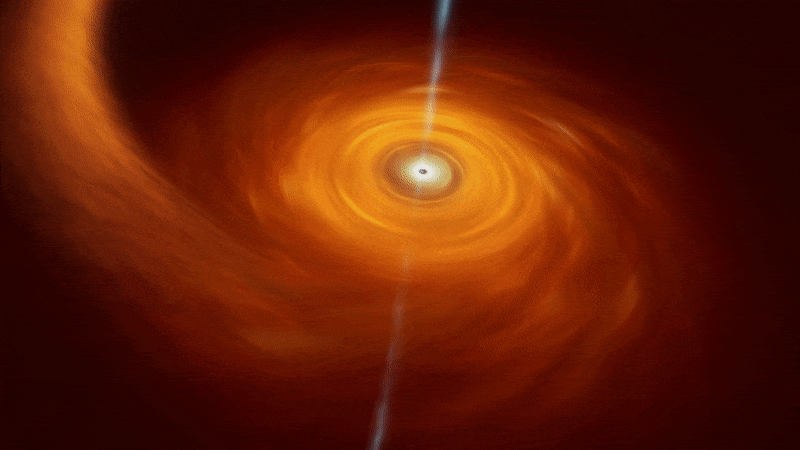
This animation is an artist’s impression of how the material of a star fell towards the black hole at the centre of a distant galaxy, producing jets of matter and radiation. Because the jets are pointing almost towards us, the event, called AT2022cmc, could be discovered from Earth with an optical telescope for the first time. Credit: ESO/M.Kornmesser
Last year, the European Southern Observatory’s Very Large Telescope (ESO’s VLT) was alerted after an unusual source of visible light had been detected by a survey telescope. The VLT, together with other telescopes, was swiftly repositioned towards the source: a supermassive black hole in a distant galaxy that had devoured a star, expelling the leftovers in a jet. The VLT determined it to be the furthest example of such an event to have ever been observed. Because the jet is pointing almost toward us, this is also the first time it has been discovered with visible light, providing a new way of detecting these extreme events.
Stars that wander too close to a black hole are ripped apart by the incredible tidal forces of the black hole in what is known as a tidal disruption event (TDE). Approximately 1% of these cause jets of plasma and radiation to be ejected from the poles of the rotating black hole. In 1971, the black hole pioneer John Wheeler[1] introduced the concept of jetted-TDEs as “a tube of toothpaste gripped tight about its middle,” causing the system to “squirt matter out of both ends.”
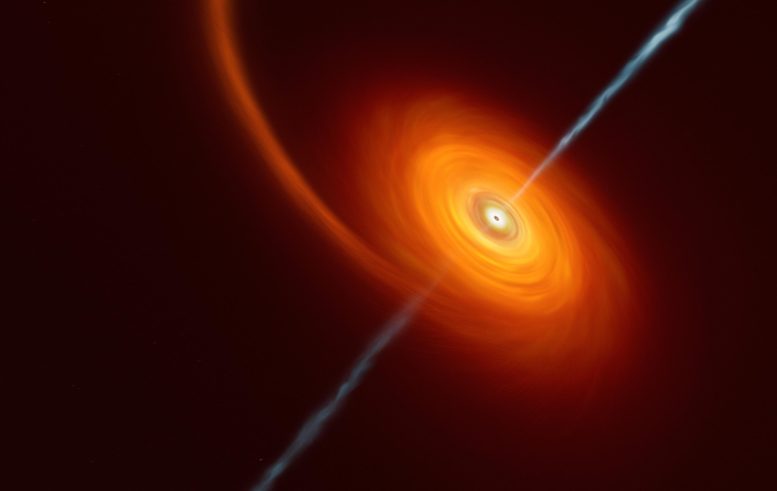
This artist’s impression illustrates how it might look when a star approaches too close to a black hole, where the star is squeezed by the intense gravitational pull of the black hole. Some of the star’s material gets pulled in and swirls around the black hole forming the disc that can be seen in this image. In rare cases, such as this one, jets of matter and radiation are shot out from the poles of the black hole. In the case of the AT2022cmc event, evidence of the jets was detected by various telescopes including the VLT, which determined this was the most distant example of such an event. Credit: ESO/M.Kornmesser
“We have only seen a handful of these jetted-TDEs and they remain very exotic and poorly understood events,” says Nial Tanvir from the University of Leicester in the UK, who led the observations to determine the object’s distance with the VLT. Astronomers are thus constantly hunting for these extreme events to understand how the jets are actually created and why such a small fraction of TDEs produce them.
As part of this quest many telescopes, including the Zwicky Transient Facility (ZTF) in the US, repeatedly survey the sky for signs of short-lived, often extreme, events that could then be studied in much greater detail by telescopes such as ESO’s VLT in Chile. “We developed an open-source data pipeline to store and mine important information from the ZTF survey and alert us about atypical events in real time,” explains Igor Andreoni, an astronomer at the University of Maryland in the US who co-led the paper published today in Nature together with Michael Coughlin from the University of Minnesota.
This animation is an artist’s impression of how the material of a star fell towards the black hole at the center of a distant galaxy, producing jets of matter and radiation. Because the jets are pointing almost towards us, the event, called AT2022cmc, could be discovered from Earth with an optical telescope for the first time. Credit: ESO/M.Kornmesser
In February of last year, the ZTF detected a new source of visible light. The event, named AT2022cmc, was reminiscent of a gamma-ray burst — the most powerful source of light in the Universe. The prospect of witnessing this rare phenomenon prompted astronomers to trigger several telescopes from across the globe to observe the mystery source in more detail. This included ESO’s VLT, which quickly observed this new event with the X-shooter instrument. The VLT data placed the source at an unprecedented distance for these events: the light produced from AT2022cmc began its journey when the universe was about one-third of its current age.
A wide variety of light, from high-energy gamma rays to radio waves, was collected by 21 telescopes around the world. The team compared these data with different kinds of known events, from collapsing stars to kilonovae. But the only scenario that matched the data was a rare jetted-TDE pointing towards us. Giorgos Leloudas, an astronomer at DTU Space in Denmark and co-author of this study, explains that “because the relativistic jet is pointing at us, it makes the event much brighter than it would otherwise appear, and visible over a broader span of the electromagnetic spectrum.”
The VLT distance measurement found AT2022cmc to be the most distant TDE to have ever been discovered, but this is not the only record-breaking aspect of this object. “Until now, the small number of jetted-TDEs that are known were initially detected using high energy gamma-ray and X-ray telescopes, but this was the first discovery of one during an optical survey,” says Daniel Perley, an astronomer at Liverpool John Moores University in the UK and co-author of the study. This demonstrates a new way of detecting jetted-TDEs, allowing further study of these rare events and probing of the extreme environments surrounding black holes.
Notes
- John Archibald Wheeler is also often credited with coining the term ‘black hole’ in a 1967 speech to NASA.
For more on this research, read:
- Supermassive Black Hole Violently Rips Star Apart, Launches Relativistic Jet
- Astronomers Catch a Black Hole Destroying a Nearby Star
Reference: “A very luminous jet from the disruption of a star by a massive black hole” by Igor Andreoni, Michael W. Coughlin, Daniel A. Perley, Yuhan Yao, Wenbin Lu, S. Bradley Cenko, Harsh Kumar, Shreya Anand, Anna Y. Q. Ho, Mansi M. Kasliwal, Antonio de Ugarte Postigo, Ana Sagués-Carracedo, Steve Schulze, D. Alexander Kann, S. R. Kulkarni, Jesper Sollerman, Nial Tanvir, Armin Rest, Luca Izzo, Jean J. Somalwar, David L. Kaplan, Tomás Ahumada, G. C. Anupama, Katie Auchettl, Sudhanshu Barway, Eric C. Bellm, Varun Bhalerao, Joshua S. Bloom, Michael Bremer, Mattia Bulla, Eric Burns, Sergio Campana, Poonam Chandra, Panos Charalampopoulos, Jeff Cooke, Valerio D’Elia, Kaustav Kashyap Das, Dougal Dobie, José Feliciano Agüí Fernández, James Freeburn, Cristoffer Fremling, Suvi Gezari, Simon Goode, Matthew J. Graham, Erica Hammerstein, Viraj R. Karambelkar, Charles D. Kilpatrick, Erik C. Kool, Melanie Krips, Russ R. Laher, Giorgos Leloudas, Andrew Levan, Michael J. Lundquist, Ashish A. Mahabal, Michael S. Medford, M. Coleman Miller, Anais Möller, Kunal P. Mooley, A. J. Nayana, Guy Nir, Peter T. H. Pang, Emmy Paraskeva, Richard A. Perley, Glen Petitpas, Miika Pursiainen, Vikram Ravi, Ryan Ridden-Harper, Reed Riddle, Mickael Rigault, Antonio C. Rodriguez, Ben Rusholme, Yashvi Sharma, I. A. Smith, Robert D. Stein, Christina Thöne, Aaron Tohuvavohu, Frank Valdes, Jan van Roestel, Susanna D. Vergani, Qinan Wang and Jielai Zhang, 30 November 2022, Nature.
DOI: 10.1038/s41586-022-05465-8
The team is composed of Igor Andreoni (Joint Space-Science Institute, University of Maryland, USA [JSI/UMD]; Department of Astronomy, University of Maryland, USA [UMD]; Astrophysics Science Division, NASA Goddard Space Flight Center [NASA/GSFC], USA), Michael W. Coughlin (School of Physics and Astronomy, University of Minnesota, USA), Daniel A. Perley (Astrophysics Research Institute, Liverpool John Moores University, UK), Yuhan Yao (Division of Physics, Mathematics and Astronomy, California Institute of Technology, USA [Caltech]), Wenbin Lu (Department of Astrophysical Sciences, Princeton University, USA), S. Bradley Cenko (JSI/UMD; NASA/GSFC), Harsh Kumar (Indian Institute of Technology Bombay, India [IIT/Bombay]), Shreya Anand (Caltech), Anna Y. Q. Ho (Department of Astronomy, University of California, Berkeley, USA [UCB]; Lawrence Berkeley National Laboratory, USA [LBNL]; Miller Institute for Basic Research in Science, USA), Mansi M. Kasliwal (Caltech), Antonio de Ugarte Postigo (Université Côte d’Azur, Observatoire de la Côte d’Azur, France), Ana Sagués-Carracedo (The Oskar Klein Centre, Stockholm University, Sweden [OKC]), Steve Schulze (OKC), D. Alexander Kann (Instituto de Astrofisica de Andalucia, Glorieta de la Astronomia, Spain [IAA-CSIC]), S. R. Kulkarni (Caltech), Jesper Sollerman (OKC), Nial Tanvir (Department of Physics and Astronomy, University of Leicester, UK), Armin Rest (Space Telescope Science Institute, Baltimore, USA [STScI]; Department of Physics and Astronomy, The Johns Hopkins University, USA), Luca Izzo (DARK, Niels Bohr Institute, University of Copenhagen, Denmark), Jean J. Somalwar (Caltech), David L. Kaplan (Center for Gravitation, Cosmology and Astrophysics, Department of Physics, University of Wisconsin–Milwaukee, USA), Tomás Ahumada (UMD), G. C. Anupama (Indian Institute of Astrophysics, Bangalore, India [IIA]), Katie Auchettl (School of Physics, University of Melbourne, Australia; ARC Centre of Excellence for All Sky Astrophysics in 3 Dimensions; Department of Astronomy and Astrophysics, University of California, Santa Cruz, USA), Sudhanshu Barway (IIA), Eric C. Bellm (DIRAC Institute, University of Washington, USA), Varun Bhalerao (IIT/Bombay), Joshua S. Bloom (LBNL; UCB), Michael Bremer (Institut de Radioastronomie Millimetrique, France [IRAM]), Mattia Bulla (OKC), Eric Burns (Department of Physics & Astronomy, Louisiana State University, USA), Sergio Campana (INAF-Osservatorio Astronomico di Brera, Italy), Poonam Chandra (National Centre for Radio Astrophysics, Tata Institute of Fundamental Research, Pune University, India), Panos Charalampopoulos (DTU Space, National Space Institute, Technical University of Denmark, Denmark [DTU]), Jeff Cooke (Australian Research Council Centre of Excellence for Gravitational Wave Discovery, Swinburne University of Technology, Hawthorn, Australia [OzGrav]; Centre for Astrophysics and Supercomputing, Swinburne University of Technology, Australia [CAS]), Valerio D’Elia (Space Science Data Center – Agenzia Spaziale Italiana, Italy), Kaustav Kashyap Das (Caltech), Dougal Dobie (OzGrav; CAS), Jose Feliciano Agüí Fernández (IAA-CSIC), James Freeburn (OzGrav; CAS), Cristoffer Fremling (Caltech), Suvi Gezari (STScI), Matthew Graham (Caltech), Erica Hammerstein (UMD), Viraj R. Karambelkar (Caltech), Charles D. Kilpatrick (Center for Interdisciplinary Exploration and Research in Astrophysics, Northwestern University, USA), Erik C. Kool (OKC), Melanie Krips (IRAM), Russ R. Laher (IPAC, California Institute of Technology, USA [IPAC]), Giorgos Leloudas (DTU), Andrew Levan (Department of Astrophysics, Radboud University, The Netherlands), Michael J. Lundquist (W. M. Keck Observatory, USA), Ashish A. Mahabal (Caltech; Center for Data Driven Discovery, California Institute of Technology, USA), Michael S. Medford (UCB; LBNL), M. Coleman Miller (JSI/UMD; UMD), Anais Möller (OzGrav; CAS), Kunal Mooley (Caltech), A. J. Nayana (Indian Institute of Astrophysics, India), Guy Nir (UCB), Peter T. H. Pang (Nikhef, The Netherlands; Institute for Gravitational and Subatomic Physics, Utrecht University, The Netherlands), Emmy Paraskeva (IAASARS, National Observatory of Athens, Greece; Department of Astrophysics, Astronomy & Mechanics, University of Athens, Greece; Nordic Optical Telescope, Spain; Department of Physics and Astronomy, Aarhus University, Denmark), Richard A. Perley (National Radio Astronomy Observatory, USA), Glen Petitpas (Center for Astrophysics | Harvard & Smithsonian, Cambridge, USA), Miika Pursiainen (DTU), Vikram Ravi (Caltech), Ryan Ridden-Harper (School of Physical and Chemical Sciences — Te Kura Matu, University of Canterbury, New Zealand), Reed Riddle (Caltech Optical Observatories, California Institute of Technology, USA), Mickael Rigault (Université de Lyon, France), Antonio C. Rodriguez (Caltech), Ben Rusholme (IPAC), Yashvi Sharma (Caltech), I. A. Smith (Institute for Astronomy, University of Hawaii, USA), Robert D. Stein (Caltech), Christina Thöne (Astronomical Institute of the Czech Academy of Sciences, Czech Republic), Aaron Tohuvavohu (Department of Astronomy and Astrophysics, University of Toronto, Canada), Frank Valdes (National Optical Astronomy Observatory, USA), Jan van Roestel (Caltech), Susanna D. Vergani (GEPI, Observatoire de Paris, PSL Research University, France; Institut d’Astrophysique de Paris, France), Qinan Wang (STScI), Jielai Zhang (OzGrav; CAS).


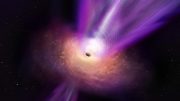


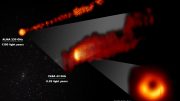
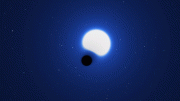

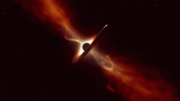
Be the first to comment on "Unprecedented Discovery: Astronomers Observe Most Distant Black Hole Devouring a Star"